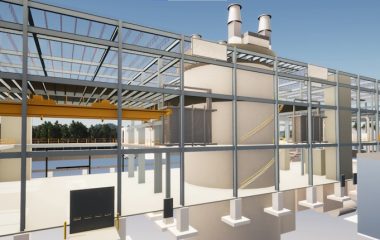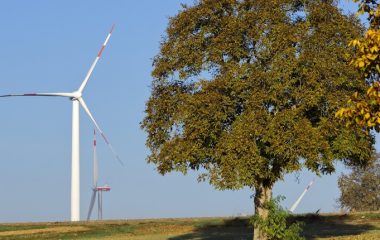
Photo: Korji123 cheng on Unsplash
INA, OMV Petrom, Motor Oil and MOL have all revealed progress in green energy investments and projects no more than a couple of days apart from one another. Following in the footsteps of the biggest oil companies in the world, they are pursuing growth in the share of renewables in their operations.
The International Energy Agency has just estimated that global investment would jump 6.5% this year to USD 2.79 trillion, of which USD 1.74 trillion is seen going to clean energy (which includes nuclear power) and fossil fuels account for the rest. The solar power sector is set to surpass oil production for the first time, at USD 382 billion to USD 371 billion.
But some of the shift is actually reflecting green energy investments of major oil companies – think Sinopec, Saudi Aramco, Shell and BP and ExxonMobil, among others. Some of them have acknowledged the significance of renewables decades ago. For instance, Equinor and TotalEnergies also rebranded themselves.
Their smaller competitors in Southeastern Europe and beyond now seem to be catching up. Just in the course of a week or so, a series of renewable energy projects and investments have been unveiled.
OMV Petrom secures funding for green hydrogen
OMV Petrom signed a financing contract through Romania’s National Recovery and Resilience Plan for the construction of an electrolyzer system of 20 MW for the production of green hydrogen. The Ministry of Energy approved up to EUR 39 million while the entire investment is estimated at EUR 74 million.
The site for the facility, expected to be completed in 2025, is in the Petrobrazi oil refinery north of Bucharest. The company said it would make 2,600 tons of green hydrogen per year.
OMV Petrom, majority owned by OMV from Austria, stressed it has the opportunity to become the main integrated player in Romania’s hydrogen market. In its EUR 11 billion investment plan for the current decade, it earmarked more than 35% for low and zero carbon endeavors.
MOL Group expands bioenergy business
In neighboring Hungary, MOL Group reached a deal to buy a 4 MW biogas-fired power plant in Szarvas from BayWa. It processes more than 40,000 tons of waste a year from meat production, 53,000 tonnes of residual waste (such as slurry and manure) and around 18,000 tonnes of agricultural substrate.
The facility has an annual output of 12.5 million cubic meters of biogas.
From refining oil to solar power project development
Greek company Motor Oil Hellas said it acquired 75% of Unagi, which in turn has a 51% share in three project firms responsible for a solar power portfolio of 1.9 GW in nominal capacity. The transaction was agreed through the refiner’s new subsidiary Motor Oil Renewable Energy or MORE.
The locations are in the Macedonia region and Central Greece. Public Power Corp. (PPC) signed a deal last year on the purchase of the other 49% of the same group of projects. They are controlled via PPC Renewables.
Offshore wind opportunities open up in Croatia
Croatian oil and gas company INA – Industrija nafte, owned by MOL, has just become a renewable energy producer. Its Virje solar power plant, with a nominal capacity of 10.2 MW and a 9 MW connection to the grid, has entered the testing phase.
It is the second-biggest photovoltaic facility in the country. Virje is estimated to produce 12.2 GWh per year. Management Board President Péter Ratatics highlighted the firm’s ambitions for geothermal energy, offshore wind power and green hydrogen production as well as the decade-long development of carbon dioxide capture and storage projects for depleted oil fields.
Ratatics: We are making history at INA
“By putting our first solar power plant into operation, we are making history at INA and taking a step towards a greener and more sustainable future of our business. INA is making significant efforts to upgrade the traditional value chain with various profitable renewable energy projects,” Ratatics stated.
Earlier this month the company got a EUR 252,500 grant approved from the European Union’s Connecting Europe Facility (CEF) to study the feasibility of installing a 300 MW offshore wind farm in the Northern Adriatic. The area under research spans 2,200 square kilometers between Pula in Istria and the Italian city of Ravenna.
“If the studies’ outcome is positive, and subject to the project final investment decision, the construction of the wind farm could start in 2026 for a launch of the commercial operations in 2029. This will improve significantly both countries’ security of energy supply and increase renewable energy generation capacity,” European Climate, Infrastructure and Environment Executive Agency (CINEA) said.
Croatia’s offshore wind power potential is estimated at 25 GW.
Decarbonization efforts are not new in Balkans oil sector
None of the aforementioned companies in the region is exactly new in the renewables sphere, but the recent news may indicate an acceleration in investment.
Elsewhere, Petrol from Slovenia has diversified its activities from fossil fuel distribution to electricity and district heating as well as to energy efficiency and renewable energy projects.
Greece-based HELLENiQ Energy, formerly known as Hellenic Petroleum or HELPE, operates the biggest solar power plant in the Balkans and is planning to enter the offshore wind game in its home country.
Serbian NIS is working on green and blue hydrogen projects. Its plan to install the 102 MW Plandište wind power plant has been dormant for years.
Zarubezhneft has installed a 1 MW solar park at the site of its defunct RNB refinery in Brod in Bosnia and Herzegovina.


















Be the first one to comment on this article.